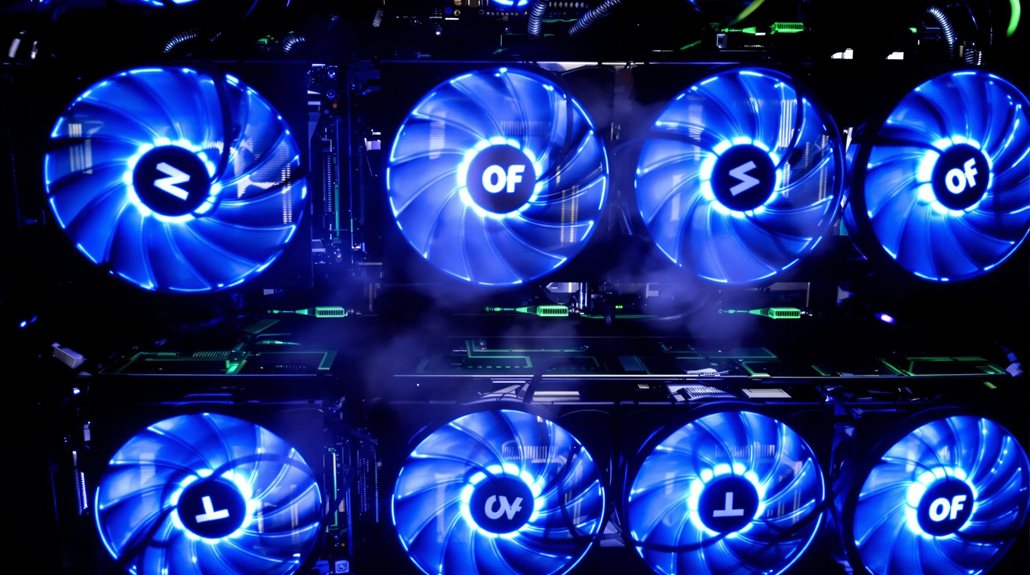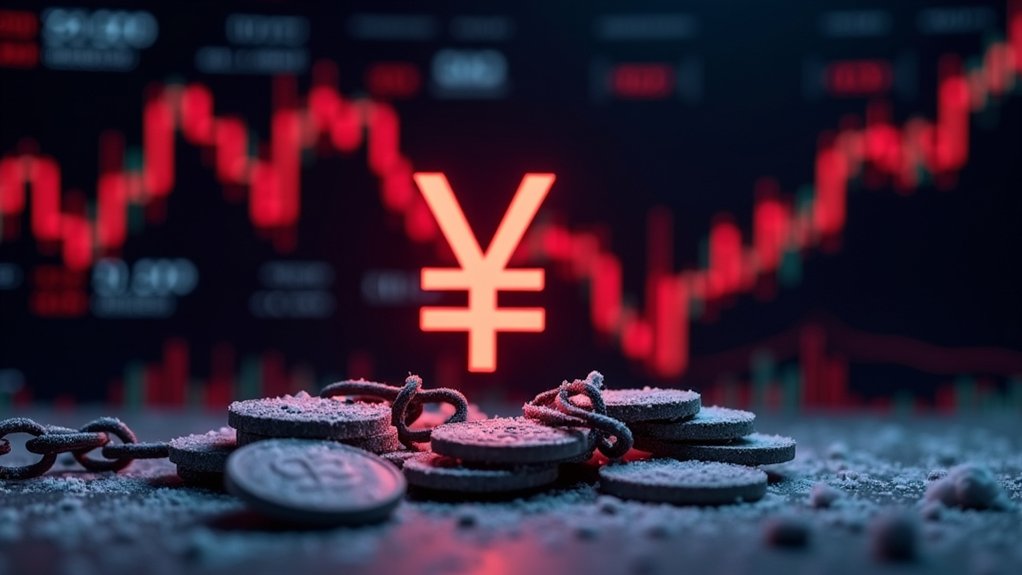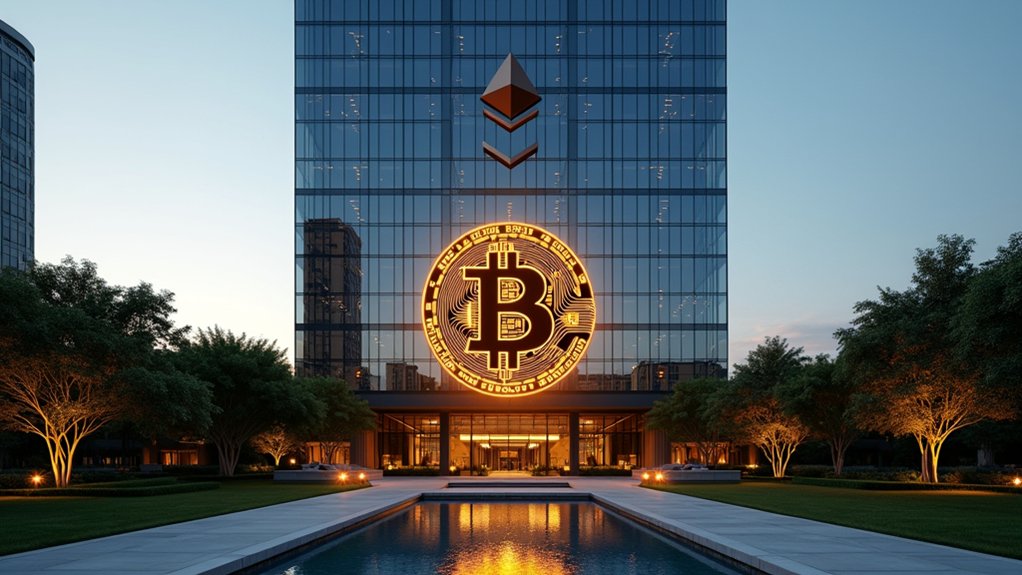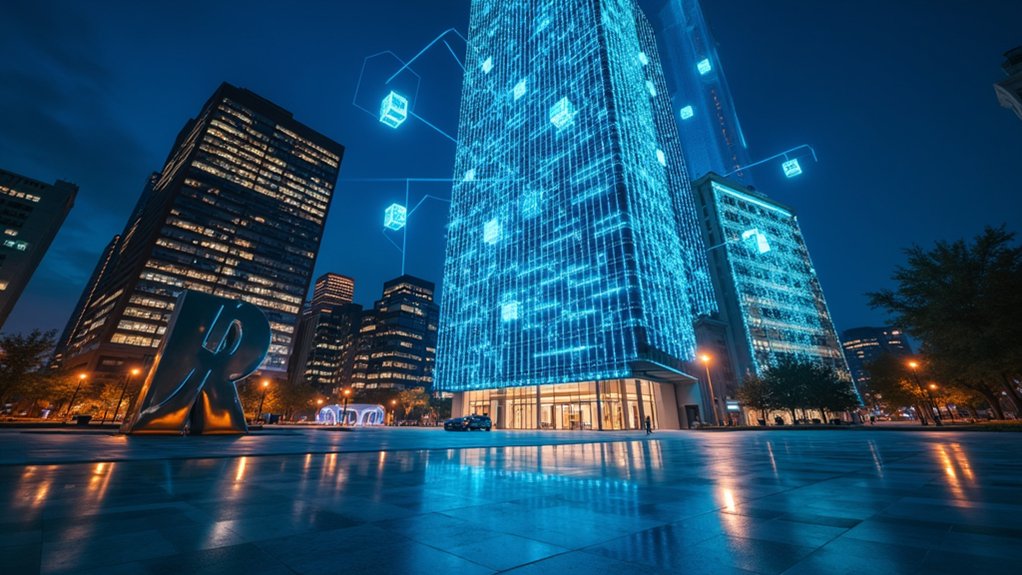Bitcoin mining requires specialized ASIC mining machines that cost over $1,500, plus a reliable internet connection and significant electrical power. Miners typically join mining pools to combine their computing power and increase earnings potential. The process needs specific software like CGMiner or EasyMiner, along with a Bitcoin wallet to store earned coins. While mining offers opportunities, challenges include high electricity costs and increasing technical complexity. Understanding the fundamentals helps navigate this evolving digital frontier.
Quick Overview
- Purchase specialized ASIC mining equipment, as it offers the highest efficiency for Bitcoin mining compared to CPU or GPU alternatives.
- Join a mining pool to combine computing power with other miners and increase your chances of earning Bitcoin rewards.
- Set up reliable internet connection, proper cooling systems, and necessary software like CGMiner or EasyMiner for mining operations.
- Create a secure Bitcoin wallet to store your earned cryptocurrency and configure mining software with pool information.
- Calculate potential profitability using mining calculators, considering electricity costs, equipment expenses, and current Bitcoin price.
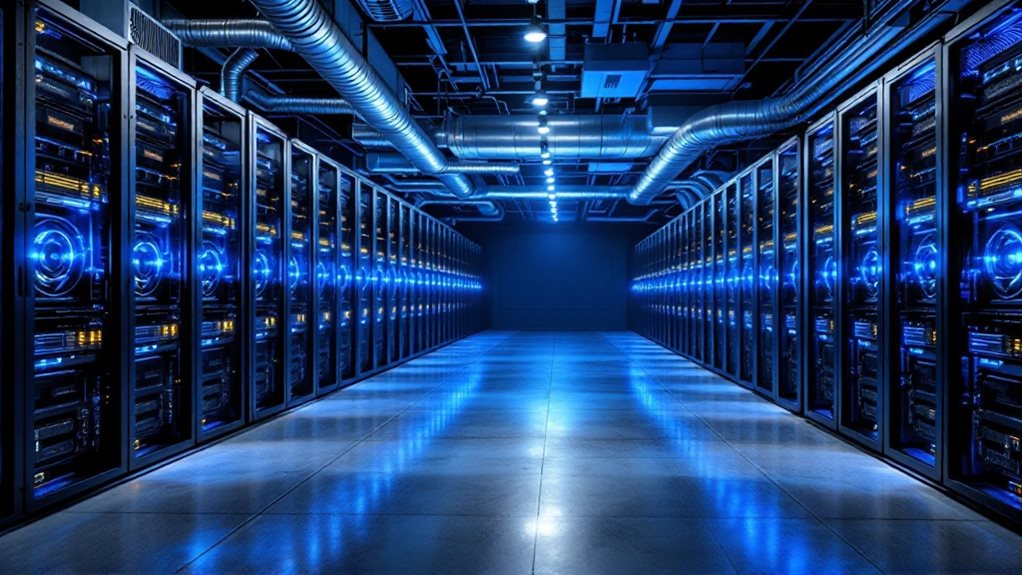
Bitcoin mining has become increasingly complex as more people join the network. Today’s miners need specialized equipment called ASIC miners, which are computers built specifically for mining Bitcoin. While some miners use powerful graphics cards (GPUs) to mine other cryptocurrencies, Bitcoin mining requires these specialized ASIC machines to be profitable. Miners who successfully solve blocks receive block rewards and fees as compensation for their work. These machines typically cost over $1500 to purchase and set up properly. ASIC mining represents peak mining efficiency compared to older methods like CPU and GPU mining.
The setup process involves both hardware and software components. Miners need a reliable internet connection with at least 1 Mbps speed and a proper cooling system to prevent their equipment from overheating. They’ll also need enough electrical power to run their mining machines, which can consume significant amounts of energy. Online mining calculators can help determine potential earnings based on hardware and electricity costs.
On the software side, miners install programs like CGMiner, BFGMiner, or EasyMiner to manage their mining operations. They’ll need a Bitcoin wallet to store any coins they earn and software to connect to the Bitcoin network. The mining software can run on Windows, Linux, or macOS computers, and it needs to stay synchronized with the blockchain network.
Most miners join mining pools instead of mining alone. Mining pools combine the computing power of many miners, increasing their chances of earning Bitcoin rewards. To join a pool, miners configure their software with the pool’s information and their wallet address. They can then monitor their mining performance through the pool’s dashboard.
The mining process isn’t without its challenges. Electricity costs are a major concern, as mining machines run 24/7 and consume lots of power. The difficulty of mining Bitcoin also keeps increasing, which means miners need more powerful equipment over time to stay competitive. This has led to environmental concerns about the energy consumption of Bitcoin mining.
There are also legal considerations to keep in mind. Some countries have restrictions or bans on cryptocurrency mining, while others welcome it. The profitability of mining changes constantly, depending on factors like Bitcoin’s price and the overall mining difficulty of the network.
Miners need to regularly update their software and hardware to maintain peak performance. They monitor their hash rate, which shows how quickly their machines can process mining calculations.
The mining landscape continues to evolve, with new challenges and opportunities emerging as the Bitcoin network grows. Despite these challenges, Bitcoin mining remains a crucial part of maintaining the cryptocurrency’s network and security.
Frequently Asked Questions
How Much Electricity Does Bitcoin Mining Consume on Average per Month?
Bitcoin mining consumes between 7.5 and 12.5 terawatt-hours (TWh) of electricity per month globally, based on annual estimates of 91-150 TWh.
That’s roughly the same amount of power that Argentina uses in a month.
In the US alone, Bitcoin mining uses about 2-7.5 TWh monthly, which is enough electricity to power hundreds of thousands of homes.
It’s a significant energy user that keeps growing as more miners join the network.
Can I Mine Bitcoin Using My Smartphone?
While it’s technically possible to mine Bitcoin on a smartphone, it’s not practical.
Today’s phones don’t have enough processing power to compete with specialized mining machines called ASICs. Phone mining produces almost no profit and can damage the device through overheating and battery strain.
Some people use their phones to monitor mining operations or manage crypto wallets instead of actual mining.
What Happens to Bitcoin Mining After All Coins Are Mined?
When all bitcoins are mined around the year 2140, miners won’t receive block rewards anymore.
Instead, they’ll only earn money from transaction fees – the small amounts people pay to send bitcoin.
The network’s security will depend on these fees being high enough to keep miners interested.
Some experts think transaction costs might go up to make mining profitable, while others believe new technologies and solutions will help keep fees reasonable.
Is Bitcoin Mining Legal in All Countries?
No, Bitcoin mining isn’t legal in all countries.
While it’s allowed in most places like the US, Canada, and many European countries, some nations have banned or restricted it.
China completely banned mining in 2021, while places like Egypt and Qatar have made it illegal.
Other countries, like Sweden and Iran, haven’t banned mining but have strict rules or high taxes.
The rules keep changing as countries update their laws about cryptocurrency.
How Long Does It Take to Mine One Bitcoin?
With current technology, it takes about 4,505 days (over 12 years) to mine one Bitcoin using a 390 TH/s mining setup.
This time isn’t fixed though – it changes based on network competition and mining difficulty.
Most miners don’t mine alone because it would take too long. Instead, they join mining pools where they share resources and split rewards.
The actual time varies depending on the mining equipment’s power and network conditions.
